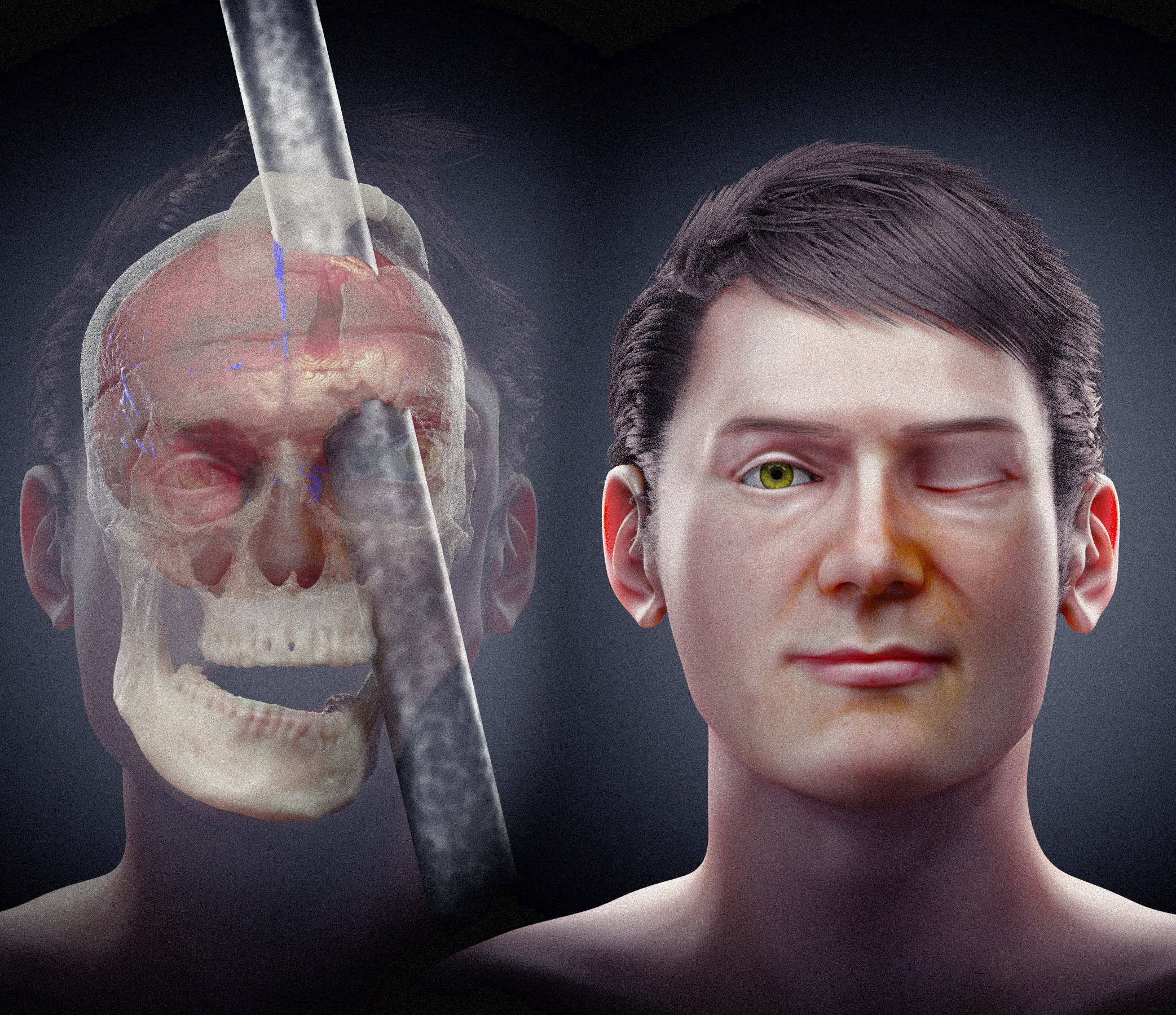On September 13, 1848, railroad foreman Phineas Gage suffered one of the most horrific workplace accidents in history when an iron bar punched a hole in his skull, obliterating a significant part of his brain. Despite the wound, Gage lived for another 12-and-a-half years, remaining active and (relatively) normal throughout.
For the first time, scientists have reconstructed Gage’s face as it appeared at the time of the freak injury. The facial approximation was produced by 3D designer and forensic expert Cícero Moraes, who created a digital model based on computed tomography scans of Gage’s skull, which had been donated to Harvard Medical School’s Warren Anatomical Museum after his death.

The injury suffered by Phineas Gage, and his appearance following his recovery.
Image credit: Cícero Moraes
The incident occurred as Gage prepared to blow up some rocks during the construction of a railway line in Vermont. At some point, the foreman lost his focus and dropped the heavy iron rod that he was using to tamp down the gunpowder.
The rod then struck a rock, causing a spark which set off the gunpowder. This caused the rod to be fired like a harpoon, entering Gage’s skull via the left cheek before exciting at the top of the cranium.
Measuring 1.09 meters (3.6 feet) in length and 3.18 centimeters (1.25 inches) in diameter, and weighing around 6 kilograms (13.2 pounds), the solid metal projectile eventually landed more than 10 meters (33 feet) behind Gage, leaving a trail of blood and brain tissue in its wake.
The stricken worker was then transported back to his hotel on an ox cart, before apparently climbing the stairs to his room unassisted. The doctor who came to examine him later removed around 28 grams (1 ounce) of mangled brain before bandaging Gage’s skull.
Incredibly, Gage was back on his feet within a month and later moved to Chile to work as a stable hand. Despite his remarkable physical recovery, however, friends and colleagues noted that Gage was not the same person after his injury.
For instance, he was described as childlike in his intellectual capacity and is reported to have become somewhat unpleasant, showing little respect to other people and developing a potty mouth. He eventually died on May 21, 1861, precisely 12 years, six months and eight days after losing part of his brain to an iron rod.
During the reconstruction of Gage’s face, Moraes confirmed that the majority of the damage appeared to be concentrated around the left frontal lobe of the brain. Noting how this injury altered Gage’s personality, brain surgeons later took to deliberately removing parts of the frontal lobe in patients with mental illness or undesirable character traits – a process known as a lobotomy.
Unfortunately, however, many lobotomy patients ended up in far worse condition than Phineas Gage.
A description of the facial reconstruction process can be found here.
Source Link: Scientists Reconstruct Face Of Phineas Gage, Who Survived An Iron Bar Through The Brain